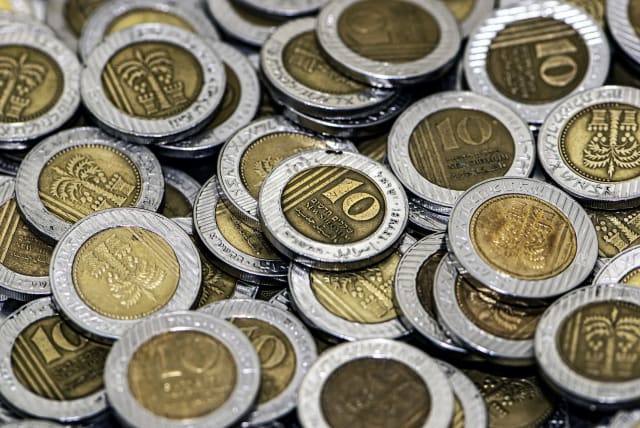Do you have a NIS 10 coin? It might be worth a lot of money

A TikTok user uploaded a video highlighting an engraving flaw on the coin. If you're lucky enough to have one, you can sell it to coin collectors in Israel or abroad and earn 13 times its face value.
Did you know that the NIS 10 coin in your pocket or wallet might be worth much more? Coin collectors believe that due to a minting error, this coin could be valued between NIS 115 and NIS 130.
A TikTok user named Amiteven posted a video showcasing an engraving flaw above the letters in the ancient Hebrew script on the coin.
If you happen to have a coin with this flaw, you can offer it to coin collectors in Israel or abroad and potentially earn 13 times its face value.
@amiteven1 #שקלים#שקל#עשר#נדיר#טעות#מטבעותדיגיטליים #מטבע #אספן #tiktok #money #10 #foryou #foryoupage #coin #coinsystemplayer #coinsoftiktok #shekel #israel #money ♬ Epic Motivational
What is on Israel's NIS 10 coin?
The NIS 10 coin is the highest denomination in the new shekel series. It was first introduced in Israel in 1995, following the issuance of a banknote of the same value in 1985 during the transition from the old shekel to the new shekel.
After the banknote ceased circulation, the bimetallic coin was introduced on February 7, 1995, with a value of NIS 10. The outer ring is made of nickel-plated steel, while the center is made of bronze coated with urate. The coin weighs 7 grams, has a thickness of 2.2 mm, and a diameter of 23 mm, with a golden center diameter of 16 mm. The edges of the coin are incised.
The obverse side of the coin, designed by Reuven Natales, features a palm tree with dates, with two woven baskets with dates inside at the foot of the tree. The symbol of the State of Israel appears on the left side of the palm tree, and the inscription "Legalat Zion" is displayed on the right side, written in both ancient Hebrew and modern Hebrew. Pearls are embedded along the right half of the circumference of the inner circle, while the left side of the coin is partially grooved. The design on the obverse side is inspired by an ancient Hebrew coin from 69 CE, the fourth year of the Jewish-Roman war before the destruction of the Second Temple.
The reverse side of the coin bears the coin's value - "10 new shekels" - inscribed in Hebrew, Arabic, and English, where it is spelled as "sheqalim." To the right of the denomination, the name of the country is displayed in Hebrew, Arabic, and English, along with the year of minting in the Hebrew calendar. On the left side of the ring, a cluster of dates is depicted, along with grooves similar to those on the obverse side. Some coins also feature a portrait of prime minister Golda Meir, designed by Gabi Neuman.
Jerusalem Post Store
`; document.getElementById("linkPremium").innerHTML = cont; var divWithLink = document.getElementById("premium-link"); if (divWithLink !== null && divWithLink !== 'undefined') { divWithLink.style.border = "solid 1px #cb0f3e"; divWithLink.style.textAlign = "center"; divWithLink.style.marginBottom = "15px"; divWithLink.style.marginTop = "15px"; divWithLink.style.width = "100%"; divWithLink.style.backgroundColor = "#122952"; divWithLink.style.color = "#ffffff"; divWithLink.style.lineHeight = "1.5"; } } (function (v, i) { });
